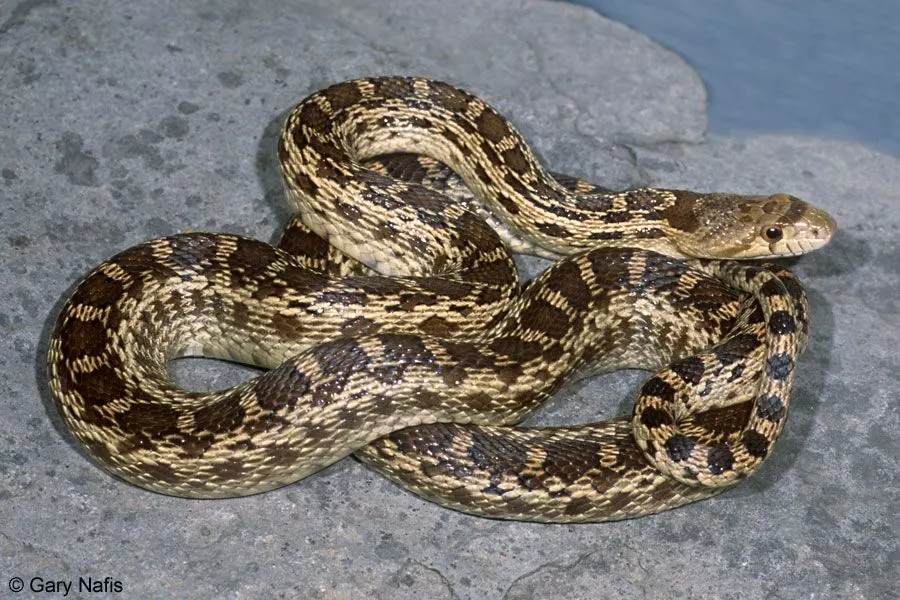
Description:
Scientific name: Pituophis catenifer
Life span: About 10-15 years
A nonvenomous colubrid snake species is called Pituophis catenifer. They have a series of huge, dark brown or black blotches on the dorsum, as well as smaller, darker spots on the sides. Dorsally, they are yellowish or pale brown. On the ventral side, they have homogeneous or brown markings that are yellowish.
Native Region/Habitat
From southern British Columbia south through all of western North America to northern Mexico, gopher snakes can be found.

Behavior:
Although gopher snakes are typically nocturnal animals, they may become active at night in warm conditions. They are solitary and live by themselves in their self-dug tunnels or in other mammals’ abandoned burrows. Although they are snakes that live on the ground, they can climb well. They are also excellent swimmers and may chase frogs in ponds. Gopher snakes spend the frigid months of late fall and winter hibernating underground. They have a special defense mechanism where they inflate their bodies and coil into the pit viper attack position. Gopher snakes, however, sometimes attack with closed mouths in order to “warn off” potential predators rather than opening their mouths wide. Moreover, they frequently shake their tails, leading predators to believe they are rattlesnakes. When the snake is on gravel or among dry leaves, this technique works well. Gopher snakes have the ability to hiss loudly when frightened or angry. Nonetheless, they are neither venomous, often docile, or dangerous to people.
Care As a pet/In captivity:
Housing: A minimal enclosure size for gopher snakes is 4 x 2 x 2 feet. It’s crucial to offer them a good selection of decor to use in this area. The more decorations you put in your enclosure, the more likely it is that your snake will leave because it will feel safer and have more to explore.
When changed around occasionally, decor like branches, tunnels, cork pieces, logs, rocks, and vegetation is even more helpful for your snake.
Temperature: In order to protect your animal’s safety and maintain the proper temperatures in your surroundings, it is also crucial that any heat source be connected to the appropriate thermostat. With a suitable gradient for thermoregulation, the basking temperature for gopher snakes should be around 32C and the cooler end should be at 22–25C. A digital thermometer can be used to accurately monitor temperatures.
Humidity: Although gopher snakes don’t require much humidity and shouldn’t require human involvement, it’s a good idea to sprinkle the area during shedding to slightly increase humidity and/or create a mossy area. This will facilitate the procedure by helping to loosen the skin.
Diet: Being a carnivore, the gopher snake will only eat other creatures, mostly defrosted mammal species in captivity. Rats, mice, and chicks can all serve as prey for your snake, however rats and mice should be the most steady. The prey will be offered on tweezers after being defrosted, which should entice your snake to strike and coil the prey as it would ordinarily do. Making sure the food is warm can promote better feeding.
Table





